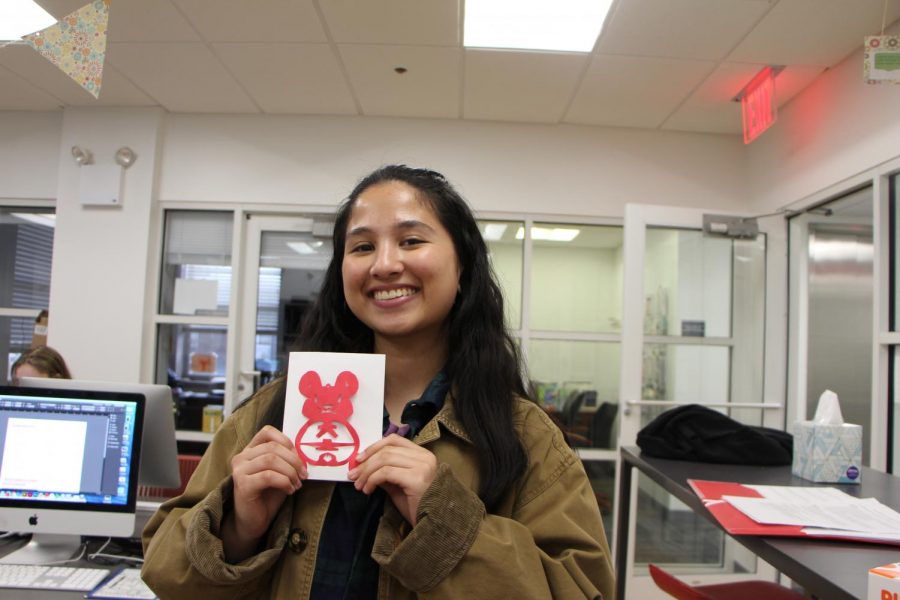Lunar New Year: Explained
Festivities kick off across the world to celebrate the Year of the Rat
Honor Seares and a paper rat she cut out during her Mandarin class as part of New Year’s celebrations.
February 17, 2020
On Saturday, January 25th, people all over the world celebrated Chinese New Year. The Chinese New Year called the Spring Festival in mainland China, is based on a lunar calendar, rather than the standard Gregorian solar calendar which most of the world is accustomed to using. Unlike the Gregorian New Year, the Lunar New Year does not fall on the same day every year. Instead, it falls on the first day of the 12th moon phase which happens anytime between January 20 and February 21. Each New Year also gets a zodiac animal based on a 12 animal cycle. This year is the year of the Rat, which is the first animal of the cycle. If you are born in the year of the rat (recent years of the rat are 2008 and 1996) Chinese culture says that you will probably be smart, innovative, quick-witted, stubborn, successful, and satisfied with a modest life.
Celebrations for the Spring Festival are much more elaborate in China than what Americans witness in their local Chinatowns. In China, Spring Festival actually lasts for 15 days after the New Year and was originally a festival for praying to their agricultural gods for a good farming season in the coming spring. However, most of the commonly practiced traditions in the Spring Festival were formed from the myths surrounding it, rather than its true origin. One of these myths is the story of a young brave boy who protected his village from a horrible monster, named Nian, by throwing firecrackers at it. This story carried down generation by generation is now the reason for both the famous lion dances and the fireworks that are now icons of the Spring Festival. It also created another iconic Chinese New Year tradition: the red envelopes. Before the brave young boy defeated Nian, parents would give their children stacks of money to bribe the monster with if he came to attack them. This part of the story now embodies itself in a cash-filled red, which is a lucky color in China, envelopes to serve as luck filled gifts to children and their futures.
From causing the largest human migration every year to celebrations in local Chinatowns all around the world, Lunar New Year festivities continue to grow in popularity every year around the world! The next Chinese New Year falls on Friday, February 12, 2021, and is the year of the Ox.













































